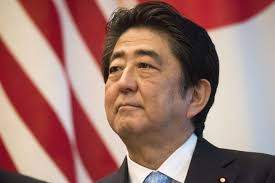Japan Rethinking How to Counter Chinese, North Korean Missile Threats

Japan is looking at offensive counter-strike as one way of deterring China’s and North Korea’s expanding missile threats, as Tokyo re-examines its future defense needs after backing away from building two Aegis Ashore sites, an author of a recent report on emerging defense technologies said Wednesday.
Ryo Hinata-Yamaguchi, a visiting professor at Pusan National University, said that option surfaced when Japan shelved its plans to build the sites to supplement its ship-borne ballistic and land-based Patriot missile defense systems.
“What do we need to defend ourselves better” is the question the government of Prime Minister Shinzo Abe is asking itself. He added that Japan’s Ministry of Defense is also questioning whether it should proceed with buying the American Global Hawk, a high-altitude, remotely piloted surveillance aircraft.
“Japan is going to have to re-think asymmetric” warfare, its technology and concepts of operations, Hinata-Yamaguchi added, because “China has mass.” For Tokyo, that translates into greater investment in its maritime and Japanese Air Self-Defense Forces at the expense of the land forces and legacy systems. It also means realizing that the United States and Japan cannot maintain a free and open Indo-Pacific on their own, he said.
He said Japan’s examination of technology and the concept of operations must take into account Beijing’s advances in unmanned aerial and undersea systems, cyber, space lasers, networking of diverse systems and artificial intelligence.
Tate Nurkin, the co-author of the Atlantic Council’s “Emerging Technologies and the Future of U.S.-Japan Collaboration,” said Japan is looking “to fill persistent gaps” in its security, particularly in the southwest islands. The Aegis Ashore sites were meant to address that gap.
In Japan’s case, unmanned systems — “the wingman” to manned aircraft and vessels –can be particularly useful to improved defenses in persistent aerial long-range intelligence, surveillance and reconnaissance.
“It’s not a technological problem, but a geopolitical problem” of how to best counter China’s advances in weaponry,” he said. Nurkin noted that requires closer collaboration among the two nations’ defense industrial bases and their technological industrial base for starters.
“Data is more important bullets,” retired Marine Gen. James Cartwright, former vice chairman of the Joint Chiefs of Staff, said at the start of the online forum. “It is the leverage point” in discussing future conflict. He added that the Pentagon itself hasn’t embraced that idea; but Amazon, Tesla and others have and found success in market dominance.
Picking up on the importance of data in Chinese security thinking, Sarah Kirchberger of the Institute for Security Policy at the University of Kiel, said Beijing has been investing “an enormous amount of financial firepower” in the maritime domain to gather real-time surface and undersea awareness.
That spending “will probably have the largest impact” on future security for the entire Indo-Pacific. As she explained, the Chinese are developing space, air and sea sensor systems taking real-time data on underwater traffic. That data can then be networked and analyzed using artificial intelligence algorithms at a super-computer system to “filter out background noise.” With noise gone, “undersea stealth” doesn’t exist.
The networking among systems also improves China’s ability to “swarm” manned and unmanned systems and to strike a host of other targets at the same time.
If Beijing achieves this kind of awareness, it undercuts “the United States and Japan’s ability to collaborate” using one of their greatest technological edges in a crisis.
But Nurkin said Washington and Tokyo have historically demonstrated the ability to keep that edge. Their strength in undersea operations remains “not only to counter but to create new problems for China” as the allies themselves introduce advanced technologies.
Sharing national security data, however, has always been tricky and requires trust between allies and partners, the panelists agreed. Kirchberger said, “data-sharing is not a given” even in strong alliances like NATO. She found one encouraging sign in the Indo-Pacific of trust-building in the joint anti-submarine warfare exercises the United States conducted with India. India also announced the purchase of Sikorsky MH-60R helicopters, which will improve interoperability with the Navy in ASW missions.
Likewise even this year’s scaled-back RIMPAC exercise is another example of building trust among allies and partners in a range of maritime operations.
Kirchberger added in an answer to a follow-up question that China has invested in spaced-based non-kinetic technology, like spoofing GPS, to disrupt American and Japanese combined operations. “They learned from the U.S. operations in the [first] Gulf War and Taiwan Straits” the advantages GPS gave Washington in combat with precision weapons and deterrence in masking combined operations.
But while the technology is in reach “to create new problems,” he said both countries and allies and partners like Australia, South Korea and India, need to ensure its effectiveness by adapting training on how, why and when it will be used. They also need to re-consider organizational structures and address legal and ethical issues over the use of advanced technology, particularly artificial intelligence, in decision-making.
This is a major change from a “hub-and-spoke” approach to security in the Indo-Pacific, with Washington being the hub for technology and the operational lead. It means recognizing the strengths each have. For example, Kirchberger said, “Taiwan is battleground zero in information warfare” with China. The United States, Japan, South Korea, Australia and India would all benefit from Taipei’s “sharing of best practices and the scope of the problem.”
But China too is not operating alone in this changing environment.
“We also need to look at what Russia is doing” in the Indo-Pacific, Kirchberger said when considering threats and technology. “They are coordinating some of their disruptive actions” like air incursions in the East China Sea with China. “They also are creating an early warning missile system for China and coordinating their GPS systems,” which are important for weapons targeting.
In the end, China is working diligently on “how to conduct what they call systematic destructive warfare,” she said.
Photo: Japanese Prime Minister Shinzo Abe in Tokyo on Aug. 18, 2017. DoD Photo











